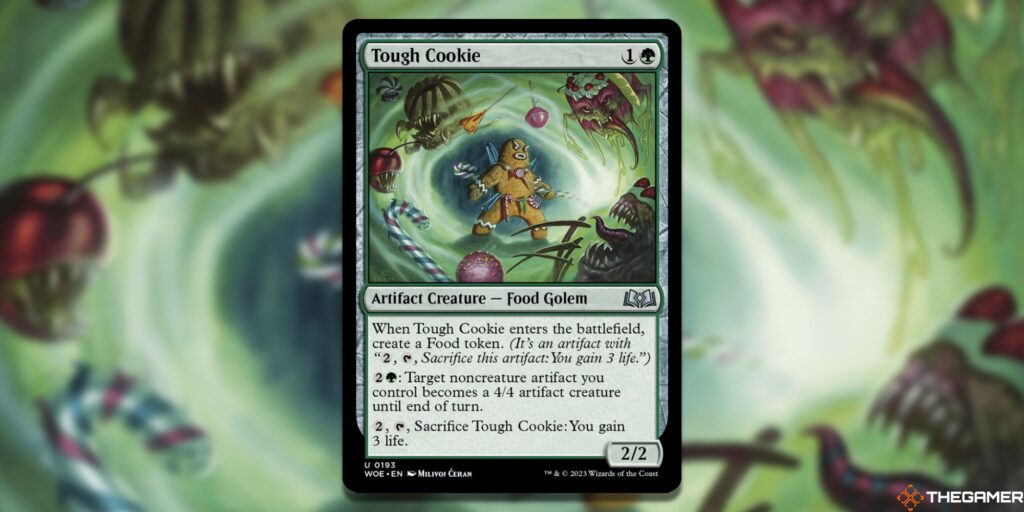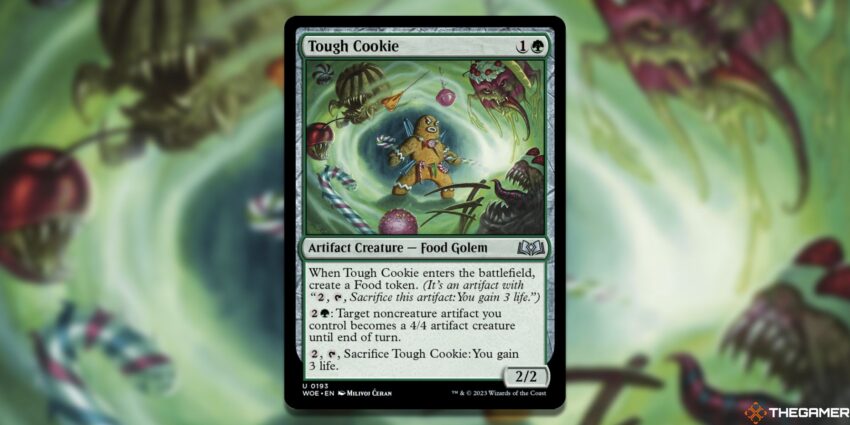
Delicious Decks: Exploring Magic The Gathering Food Cards
Magic: The Gathering (MTG), the renowned trading card game, is known for its intricate gameplay, rich lore, and diverse card designs. Among the plethora of card types, the Food token has carved out a unique and flavorful niche. Introduced in the Throne of Eldraine set, Magic The Gathering food cards offer a compelling blend of lifegain, sacrifice strategies, and synergistic interactions. This article delves into the fascinating world of Magic The Gathering food cards, exploring their mechanics, strategic applications, and impact on the MTG metagame.
What are Food Tokens?
Food tokens are colorless artifact tokens with the ability “{2}, Sacrifice this artifact: You gain 3 life.” This simple yet versatile ability provides a recurring source of lifegain, which can be crucial in various game scenarios. While the individual effect of gaining 3 life may seem minor, the strategic implications of Magic The Gathering food cards are far-reaching.
The Rise of Food in Throne of Eldraine
The Throne of Eldraine set heavily featured Magic The Gathering food cards, establishing them as a core mechanic of the set. Several cards directly created Food tokens, while others offered bonuses for having them or sacrificing them. This thematic focus on food and fairy tales provided a unique and flavorful experience for players.
Key Throne of Eldraine Food Cards
- Oko, Thief of Crowns: A powerful planeswalker who could turn opposing creatures into 3/3 Elks, leaving behind Food tokens for the opponent.
- Feasting Troll King: A resilient creature that could regenerate by sacrificing Food tokens.
- Gingerbrute: An evasive creature that could gain haste by sacrificing a Food token.
- Savvy Hunter: A creature that created Food tokens upon entering the battlefield and offered card draw when you sacrificed them.
Strategic Applications of Food Cards
Magic The Gathering food cards offer a variety of strategic applications, making them valuable in different deck archetypes:
Lifegain Strategies
The most obvious application is lifegain. In aggressive matchups, the ability to gain life can stall the opponent’s attack, allowing you to stabilize and eventually turn the tide. Control decks also benefit from the incremental lifegain, providing a buffer against aggressive strategies and buying time to establish control.
Sacrifice Synergies
Food tokens can be sacrificed for various effects beyond lifegain. Many cards in MTG reward you for sacrificing artifacts, creatures, or other permanents. Magic The Gathering food cards provide a readily available source of sacrifice fodder, enabling powerful combos and value plays. [See also: Sacrifice Decks in Modern]
Value Engines
Certain cards create Food tokens repeatedly or offer additional benefits when you sacrifice them. These cards can form the basis of value engines, generating incremental advantages over time. For example, a card that creates a Food token each turn, combined with a card that draws you a card when you sacrifice an artifact, can provide a steady stream of card advantage.
Controlling the Board
Some Magic The Gathering food cards can be used to control the board. For example, cards that allow you to tap creatures when you sacrifice a Food token can disrupt the opponent’s attacks and prevent them from developing their board.
Food in Different Formats
Magic The Gathering food cards have seen varying levels of success in different MTG formats:
Standard
In Standard, Food-based decks have emerged as competitive contenders, leveraging the lifegain and sacrifice synergies to outlast opponents and generate value. The power of Oko, Thief of Crowns, during its time in Standard significantly boosted the viability of these decks. Even without Oko, Magic The Gathering food cards continue to see play in various midrange and control strategies.
Modern
In Modern, the card pool is much larger, and Food strategies face stiffer competition. However, certain combinations of Magic The Gathering food cards and other synergistic cards can create powerful and resilient decks. The key is to find the right balance of lifegain, sacrifice synergies, and card advantage to compete with the format’s established archetypes. [See also: Modern Horizons 3 Impact on Modern]
Commander (EDH)
Commander, a popular multiplayer format, is where Magic The Gathering food cards truly shine. The format’s slower pace and emphasis on value engines make Food tokens an excellent resource for lifegain, sacrifice synergies, and controlling the board. Many Commander decks include Food-related cards to provide a steady stream of value and resilience. Commanders like Gyome, Master Chef, specifically boost food strategies.
Notable Food Cards Beyond Eldraine
While Throne of Eldraine introduced the Food token, subsequent sets have continued to expand on the theme, providing new and exciting options for Food-based decks. Here are a few notable examples:
- Gyome, Master Chef: As mentioned, a legendary creature that creates Food tokens and buffs creatures when you sacrifice them.
- Asmoranomardicadaistinaculdacar: A long-named card that requires you to discard a food card to cast, but it is a powerful engine.
- The Underworld Cookbook: An artifact that creates Food tokens and allows you to sacrifice them to exile cards from graveyards.
Building a Food-Themed Deck
If you’re interested in building a Food-themed deck, here are some key considerations:
Identify a Core Strategy
Do you want to focus on lifegain, sacrifice synergies, or a combination of both? Choose a strategy that aligns with your playstyle and the available cards.
Include Card Draw and Value Engines
Food tokens alone are not enough to win the game. You need cards that provide card advantage and generate incremental value over time. Cards that reward you for sacrificing artifacts or creating Food tokens are essential.
Consider Mana Fixing
Food-themed decks often require multiple colors to access the best cards. Ensure you have adequate mana fixing to consistently cast your spells.
Protect Your Key Pieces
If your deck relies on a specific engine or combo, include cards that protect it from removal. Counterspells, hexproof effects, and indestructible abilities can help keep your key pieces on the battlefield.
The Future of Food in MTG
The popularity of Magic The Gathering food cards suggests that they will continue to appear in future sets. Wizards of the Coast has shown a willingness to revisit popular mechanics and themes, and Food tokens have proven to be a versatile and flavorful addition to the game. We can expect to see new cards that create Food tokens, offer bonuses for having them, and provide new ways to sacrifice them for powerful effects.
Conclusion
Magic The Gathering food cards offer a unique and engaging play experience. Their versatility, strategic applications, and flavorful design have made them a popular choice among MTG players. Whether you’re a seasoned veteran or a newcomer to the game, exploring the world of Magic The Gathering food cards can be a rewarding and delicious adventure. From lifegain strategies to sacrifice synergies, Food tokens provide a wealth of possibilities for deck building and gameplay. So, gather your ingredients, brew up a tasty deck, and savor the flavor of victory with Magic The Gathering food cards!
